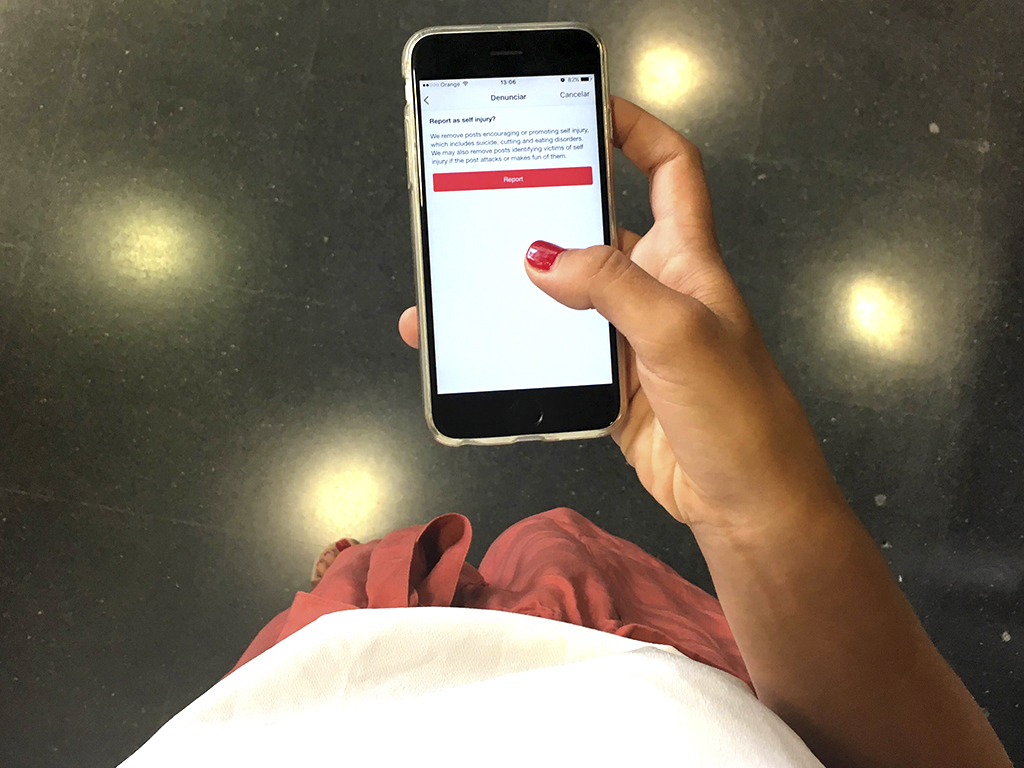Can a notification on social media help save a life?
Thousands of things can be done on social media networks: posting photos, publishing news, writing a comment and, now, helping detect someone going through a tough time. Facebook has activated a button to warn about comments or entries that suggest an acquaintance is going through a bad patch: depression, self-harm or suicidal tendencies. This warning button is also on Instagram, Twitter or Tuenti. But can a notification help save a life? UOC psychology experts analyse this issue.
"They can help detect cases of people with personal difficulties, but we cannot talk of prevention", says Noemí Guillamón, researcher for the UOC PSiNET group. "However, it was about time that the social media networks developed tools to help with these kinds of cases", the expert adds. For José Ramón Ubieto, UOC Psychology professor, the links with other people through the Internet can help with solitude, fragility and moments of crisis.
According to a PSiNET study, 23.3% of young people share their worries on social media, regardless of gender or age. "Young people reveal their everyday concerns and even the things that most worry them", adds Ubieto. Solitude, poor communication, lack of understanding concerning their life and their problems are the most recurrent issues for those with troubles of this kind.
Be aware of hashtags
Hashtags such as #selfharmmm account for 1,908,943 entries. Others such as #blithe have been published almost a million and a half times, and #secretsociety123 is one of the best known hashtags on several social media sites because it brings together different pathologies, such as bulimia, anorexia or anxiety. “These kinds of hashtags related to suicide and self-harm are used on Instagram, Tumblr or Twitter", warns Guillamón. Instagram warns about their content but allows them to be consulted. In fact, only two of the aforementioned hashtags redirect the user to a page with psychological help, says the study by Megan A. Moreno et al. According to Guillamón, among adolescents Instagram is frequently used to distribute pictures of self-harm, although it is not the only way. There are videos on YouTube and also websites. “Some of these platforms can become a medium for wallowing in sadness and anxiety”, says the PSiNET researcher.
Hashtags as a meeting point
Hashtags and the Internet allow them to contact different people who identify with the same problem. For example, in the case of eating, hashtags such as #Ana for anorexia or #Mia for bulimia are used. #selfinjuryyy is used for self-harm problems and the hashtag #Sue for suicidal tendencies. These virtual communities can encourage some to take the next step through instructions and sometimes by legitimizing the act itself, explains Ubieto. Only six of the eighteen hashtags most used on Instagram on these problems redirect the user to the suicide prevention page befrienders.org or to the network’s own help site.
Social media sites help, but they are not enough
“The detection and notification measures of the social media networks are inadequate for protecting adolescents from exposure to this content", Guillamón argues. Much of the information on the Internet is not supervised by professionals; they should be platforms regulated and controlled by health specialists.
“Preventing suicide or other problems should be done from outside the Net”, argue the two experts. For example, through detection mechanisms of depression and suicidal ideas in schools, with adequate training for parents or other people close to adolescents.
Experts UOC
Press contact
-
Editorial department
